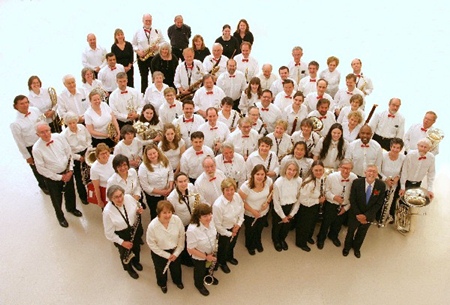Everyone now has a digital camera, point and shoot, bridge or SLR, and the
following tips will help you get the most out of your expensive investment.
Of course you should remember that point and shoot varieties
have limitations and SLR’s have advantages, whether digital or otherwise! The
two types of cameras have their different capabilities, and you must stick
within the parameters.
The first tip is one that I give at least once a year. “Walk
several meters closer!” More good shots are ruined by having the subject as
small dots in some huge background. Make the subject the hero. If the subject(s)
is/are people, then use the telephoto setting and still walk in closer. Fill the
frame with the subject and you do not need to worry about the backgrounds. Ever!
And remember when taking pictures of a group, get them to really cuddle up
together, and don’t be afraid to get them to angle their heads in towards the
center. The happy giggling faces will make a good photo. Do not take pictures of
people standing in a row like soldiers on parade.

Another easy way to better photos is to use filters to warm
up the scene, or polarize and add some intense color to the photo. “But my point
and shoot digital doesn’t take filters,” I hear you say. Sure, but the lens is
physically so small, it is easy to place something before it. Various colored
sunglasses can both polarize and add warmth to the shot. You may want to put the
camera on a tripod, while you hold the sunglasses directly over the lens. You do
not need a one meter high tripod for this either. There are small ‘mini’ tripods
you can use, which retail for around B. 200 and do the job admirably.
When taking portraits outdoors, turn the flash on as well.
The camera will have set itself to expose the brightest part of the scene, so
the flash then brightens up the foreground subject.
Another trick to outdoors portraiture is to take some shots
with the sun behind the subject to ‘rim light’ the hair with the halo effect.
With the sun behind the subject, you also stop the screwed up eyes from the
sun’s glare, which is never very photogenic.
One setting that most digital cameras possess is a ‘macro’
mode. Use this to discover new and exciting details in your garden. The macro
mode is usually depicted as a flower in your on-screen menu. Remember that to
get the best macro shots, look carefully at which part of the subject will be in
focus. The depth of field in macro is very shallow, so note where the camera
magic eye is indicating the focus point is, relative to the subject, before
slowly pressing the shutter release.
Another very simple tip, but one that seems to be forgotten
is the placement of the horizon line, which should be one third down from the
top of the LCD screen, or one third up from the bottom of the screen. The
horizon line (as the name suggests) should also be horizontal!
Another tip is to buy another memory card. The advantage of
having two cards is you never end up with a full card and another great shot to
be taken, and have to stand there and try and delete previous images. Buy the
biggest capacity card you can afford.
You should also explore your camera’s capabilities by
yourself. After all, you are not wasting expensive film, are you? Try different
settings and see what the end result can be, but remember what the settings were
if you want to repeat the effect!
It should be remembered that you bought this new camera
because it had plenty of megapixels, and unless you run the camera at its
highest resolution, all the expense of the additional megapixel capability has
been wasted. You got a 10 megapixel camera, rather than an old 2 megapixel for
that reason! Put the camera on the highest setting and leave it there.
Finally, with no film to consume, shoot lots! But not 20 of the same pose.

